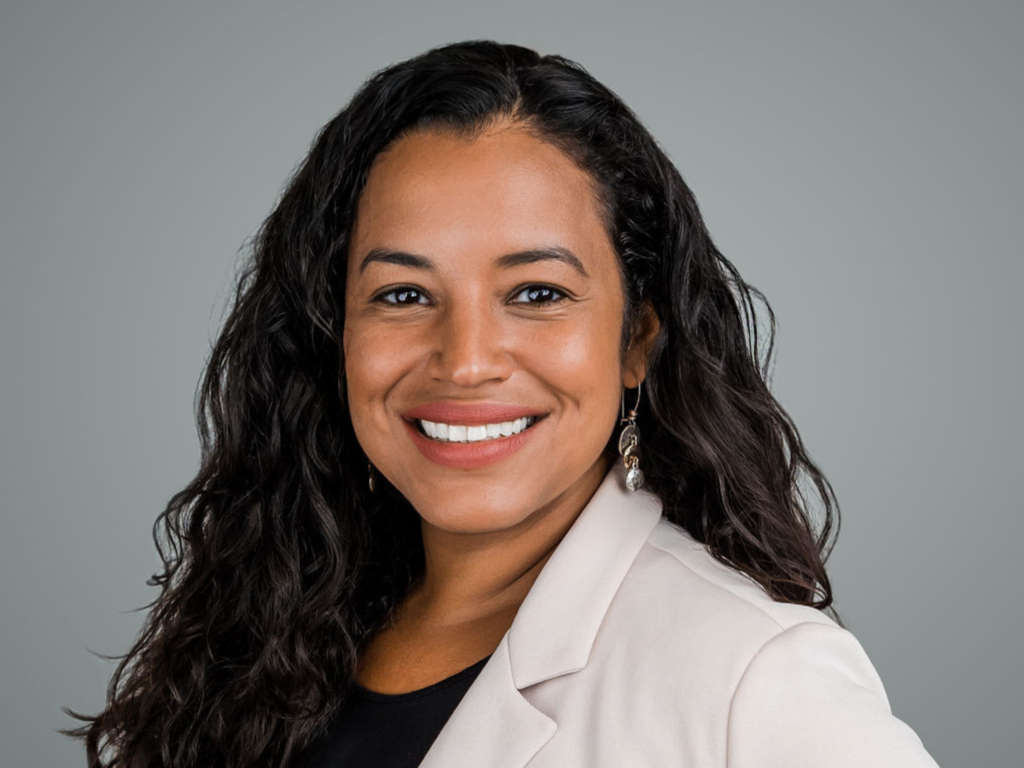By James A. Peyser, Partner, NewSchools Venture Fund. As seen in the Boston Globe, October 14, 2007
The flood waters that submerged New Orleans two years ago also sank the local school district. What had been a system comparable in size to Boston’s, with more than 60,000 students and 125 schools, resurfaced in the spring of 2006 at just a fraction of the size, with only 11,000 students and 26 schools.
The destruction of the New Orleans public schools was part of the larger human tragedy that befell the Crescent City, but it is not a loss that many residents are mourning. Before the flood, New Orleans had become a poster child for what is wrong with urban education in America, with a long list of failing schools, the worst test scores in the state, and a history of corruption and fiscal mismanagement. The public schools in New Orleans were under water long before the levies broke.
What has happened since the disaster, however, is redefining urban public education. Instead of simply rebuilding the old district, based on the old institutions, policy leaders in New Orleans and Baton Rouge decided to start from scratch, fashioning a public education system based on new ideas and promising models of reform from around the country. From the wreckage, New Orleans is emerging as a bold experiment in what a city school system can be.
For decades, reformers have been pushing to change urban public education, but have been stymied by the entrenched bureaucracies and special interests that run the schools and control the money. In New Orleans, many of these barriers have been swept away, leaving space for a new system of schools unlike any other in the United States. By the end of the last school year, New Orleans was back up to 26,000 public school students and 58 schools – only five of which were operated directly by the remnants of the old district. The rest are a mixture of state-run schools and independent charter schools, all served by a variety of new, mostly nonprofit, entrepreneurial ventures offering services to educators and parents.
Although there are plenty of serious gaps and challenges, this “un-district” is being closely watched by educators across the country as a potential model for the radical transformation of city school systems.
All city school districts – Boston included – suffer from the same disease that afflicted New Orleans before Katrina. Because of their position as monopoly providers of public education, urban districts invariably become overgrown bureaucracies that manage schools through elaborate, highly politicized systems of command and control that reward compliance with district rules rather than student achievement. Even for independent-minded school leaders, change can be nearly impossible because of powerful teachers’ unions, which hamstring principals in hiring, firing, managing, and rewarding their teachers.
Over time, outstanding teachers and principals are driven away or worn down by oppressive and often pointless administrative constraints, while even the lowest performers are afforded lifetime job security. The bureaucracy squanders scarce resources in countless ways: Technology systems are developed to serve the information needs of the central office, but are too inflexible to add any value to individual schools and teachers; bus schedules and custodial contracts trump school priorities when it comes to setting school calendars. The list goes on.
In New Orleans, that dead weight of politics and bureaucracy contributed to truly dismal results. Three-quarters of eighth-graders scored “below basic” on the state’s reading assessment in 2004. Two-thirds of eighth-graders that year scored “below basic” in math. Among ninth-graders who enrolled in high schools, only 20 percent ultimately enrolled in college. In 2004, 75 percent of the city’s schools were cited by the Louisiana Department of Education for poor performance.
As bleak as the district’s academic record was, its administrative condition was even worse. In the eight years before Katrina, the New Orleans public school district churned through eight superintendents. In 2005, the district was effectively placed into financial receivership. Perhaps the most striking barometer, though, is the way parents were abandoning the schools: between 1998 and 2005, enrollment fell by 25 percent.
Since Katrina, nearly every aspect of the status quo has changed. Instead of a centrally managed system, in which all important decisions about money, policy, and practice are made in the superintendent’s office, the system that is emerging in New Orleans puts authority where the students are, letting principals make more of their own decisions about resources, personnel, and curriculum. Instead of relying on the district as the sole provider of support services, New Orleans is developing a variety of public and private alternatives. And instead of a single collective bargaining agreement that covers every teacher in the city, New Orleans public schools are now largely union-free.
Twenty-two of the city’s schools are now run directly by the Louisiana Department of Education, in what is one of the country’s largest state-led school turnaround efforts. Thirty-one schools – more than half the district – are charter schools, which offer free education with public funds but are run independently. New Orleans’ charter schools now enroll close to 60 percent of all public school students in the city – more than twice the share of any other American city, and more than 10 times greater than the charter sector in Boston.
Critical to the success of any educational system is its ability to attract talented leaders and teachers, and New Orleans’ openness to change and innovation is attracting local and national talent. Perhaps the most notable out-of-town arrival is Paul Vallas, the hard-charging former head of public schools in Chicago and Philadelphia, who now heads the state-run portion of the school system. Hundreds of teachers and principals have arrived from around the country, drawn by what they see as a unique opportunity to make a real difference in the lives of underserved children. Several charter school founders who were planning to open schools in other cities have packed their bags and moved to New Orleans, and there are more on the way.
Within this radically decentralized system, a number of other innovative ideas have taken root. One of them is a nonprofit called New Schools for New Orleans, which helps incubate and support new charter schools, rather than leaving each one to rise or fall on its own – a weakness of charter school programs in many cities. The group also provides clear, objective information to parents about their school options, and serves as the key intermediary between the public sector and the growing ranks of national and local education entrepreneurs working in New Orleans.
Similarly, two independent groups are working to train teachers and principals and place them in New Orleans schools. One of them, called TeachNOLA, is a new joint venture between the state Department of Education and several national and local nonprofits aimed at recruiting, training, and certifying teachers. The other, New Leaders for New Schools, is a New York-based group that has set up an office in New Orleans to recruit and train principals from a national pool of candidates. Both efforts bring flexibility and energy to a crucial effort that in most districts today is run by an inefficient central bureaucracy with little capacity for attracting talent from outside its established network of regional teacher colleges.
New Orleans is also drawing on an emerging pool of nationally recognized charter schools. Perhaps the best example so far is the Knowledge Is Power Program (KIPP), a network of top quality charters targeting low-income communities. In most school districts, including Boston, charter schools have to find and pay for their own buildings – a huge obstacle. But KIPP, like many other charter schools in New Orleans, has been given former public school buildings to use for free. New Orleans’ original KIPP charter school, which was launched in Houston for Katrina evacuees, produced the highest eighth-grade reading and math scores in the district last spring, with combined proficiency rates that were about two times higher than the state average.
Not all charter schools are fulfilling their promise, and some should be closed if they don’t improve soon. Nevertheless, overall charters are outperforming their local competition and establishing new standards for excellence in a school system that has mostly known mediocrity and failure.
Some of these emerging educational ventures already exist in other cities, but nowhere is there such a high concentration of entrepreneurial activity serving such a high proportion of public school students. And nowhere has the public bureaucracy been so willing to share responsibility with the private sector.
Of course, it’s one thing to build a new school system from the ground up after the old system has disappeared. It’s another thing entirely to transform a system that remains very much alive. Still, it may provide some important lessons.
In Boston, for example, the New Orleans model of a broad portfolio of school operators could be reproduced by lifting the current cap on new charters and inviting the most successful or promising charter schools into BPS facilities at nominal rents. The city and the state could also encourage the highest performing charter schools to expand their work, in the same way that KIPP is creating a string of schools in New Orleans. Boston is home to some of the finest charter schools in America, including Roxbury Prep, Boston Collegiate Charter School, the Academy of the Pacific Rim, and MATCH. But Boston Public Schools has been hostile, not encouraging.
At the same time, the district could help create an independent nonprofit organization, comparable to New Schools for New Orleans, to provide parents with unbiased information about all schools in the city – district, pilot, charter, and private – and to help guide them through the school choice process. Boston partners with the YMCA to do parent outreach, but this effort ignores school options outside of BPS. Another New Orleans-inspired initiative might be to spin off and expand BPS’s highly regarded teacher residency program, creating a public-private partnership that would develop more top teachers, and make them available to all the public schools, including charters.
New Orleans faces enormous challenges. Many of the schools being managed directly by the state Department of Education are struggling badly, as it rapidly expands capacity to meet growing enrollment. While outperforming most state-run schools, the charter schools are still scrambling to find adequate facilities and support services. There remains a severe shortage of highly qualified educators. Although opposition to the reforms has been held at bay, some voices of discontent continue to be heard – from both the neighborhoods and the vestigial teachers’ union.
But if New Orleans emerges from the devastation of Katrina with a diverse system of excellent schools, we will see what urban public education can be without the political-bureaucratic structures that have so successfully smothered the reforms of the past. Such a real-life, large-scale example of a totally redesigned school system, developed under extraordinarily harsh conditions, promises to transform the debate about what is possible in public education.
James A. Peyser is a partner with NewSchools Venture Fund, a nonprofit, grant-making organization that supports educational entrepreneurs in the United States. He is a former chairman of the Massachusetts Board of Education, and can be reached at [email protected].

